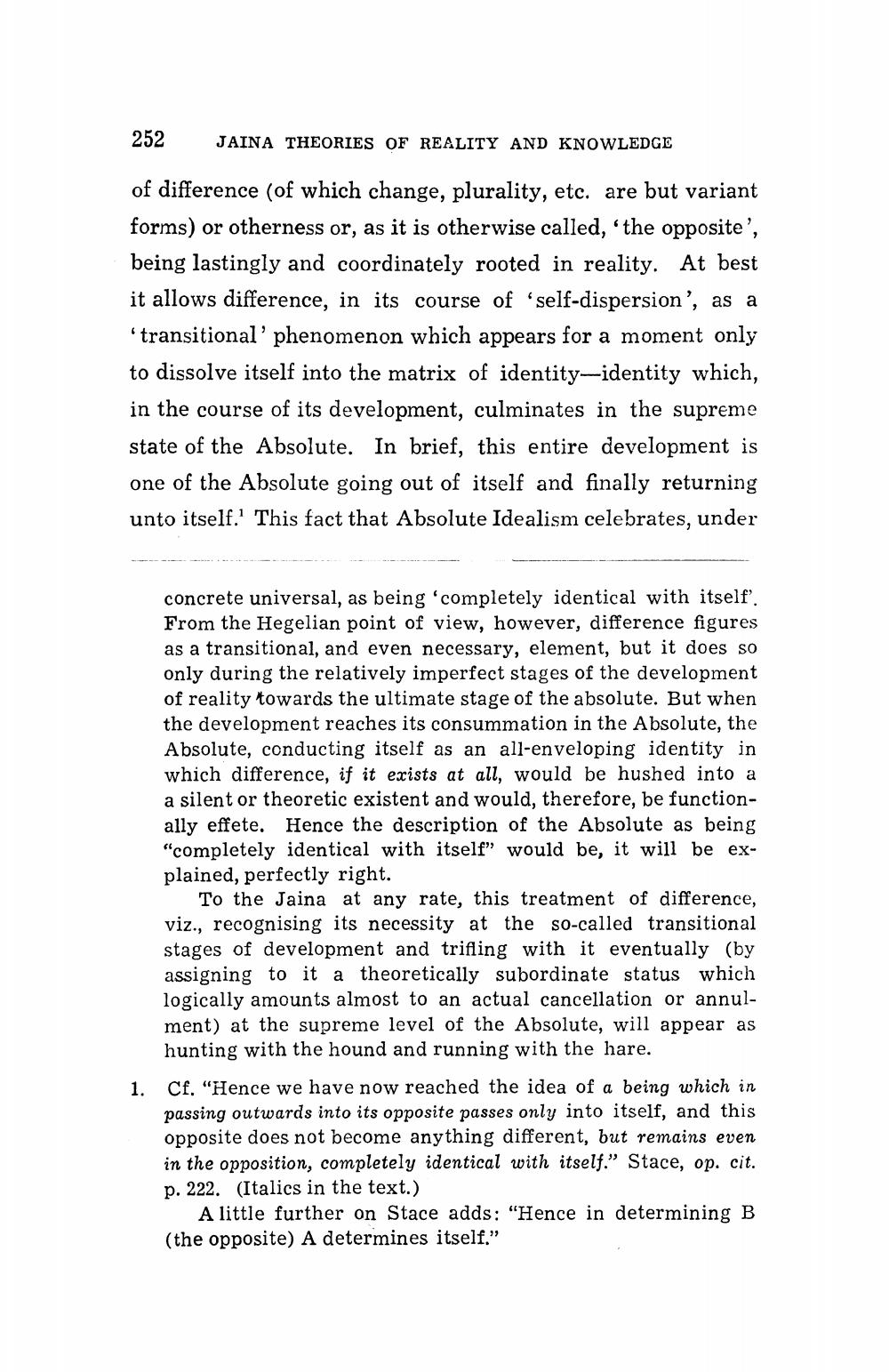________________
252
JAINA THEORIES OF REALITY AND KNOWLEDGE
of difference (of which change, plurality, etc. are but variant forms) or otherness or, as it is otherwise called, "the opposite ', being lastingly and coordinately rooted in reality. At best it allows difference, in its course of ‘self-dispersion', as a 'transitional' phenomenon which appears for a moment only to dissolve itself into the matrix of identity-identity which, in the course of its development, culminates in the supreme state of the Absolute. In brief, this entire development is one of the Absolute going out of itself and finally returning unto itself. This fact that Absolute Idealism celebrates, under
concrete universal, as being completely identical with itself'. From the Hegelian point of view, however, difference figures as a transitional, and even necessary, element, but it does so only during the relatively imperfect stages of the development of reality towards the ultimate stage of the absolute. But when the development reaches its consummation in the Absolute, the Absolute, conducting itself as an all-enveloping identity in which difference, if it exists at all, would be hushed into a a silent or theoretic existent and would, therefore, be functionally effete. Hence the description of the Absolute as being "completely identical with itself” would be, it will be explained, perfectly right.
To the Jaina at any rate, this treatment of difference, viz., recognising its necessity at the so-called transitional stages of development and trifling with it eventually (by assigning to it a theoretically subordinate status which logically amounts almost to an actual cancellation or annulment) at the supreme level of the Absolute, will appear as hunting with the hound and running with the hare. Cf. "Hence we have now reached the idea of a being which in passing outwards into its opposite passes only into itself, and this opposite does not become anything different, but remains even in the opposition, completely identical with itself." Stace, op. cit. p. 222. (Italics in the text.)
A little further on Stace adds: "Hence in determining B (the opposite) A determines itself."




